New York City is transitioning into a new version of its old self and it is with much relief that I can state the following.
There is so much to see and do!
The brisk fall weather is here and during this season of fresh starts and new adventures, I cannot think of anything better than walking around New York City to visit museums, galleries and more.
Given the sudden influx of things to do and see, I have put together a list of recommended art exhibitions to see across the city. It is already mid-September and even though most museums have extended their spring exhibition schedules, some of the shows on this list are due to close as early as October.
Since the city’s shutdown in March, the majority of our free time was spent in the New York City parks. I have relished every opportunity to take in public art along the way but now it is time to start making plans to see art indoors. In case you suddenly feel overwhelmed by the recent burst of entertaining and intellectual things to do outside of the home, this list will help you target exhibitions that are not to be missed.
Unlike the pre-Covid era, we cannot spontaneously stop by a museum, certain art galleries and other spaces such as botanical gardens, zoos, The High Line or hop on a ferry to Governors Island. The public is required to book timed tickets prior to visiting these places. A little cumbersome, but I am more than happy to abide by these new guidelines in order to gain entry to some of my favorite places in New York City. Based on the long lines observed at the Met when it had just reopened, New Yorkers are ready to comply as we have all been anxiously awaiting the return of the New York art world.
Manhattan
El Museo del Barrio
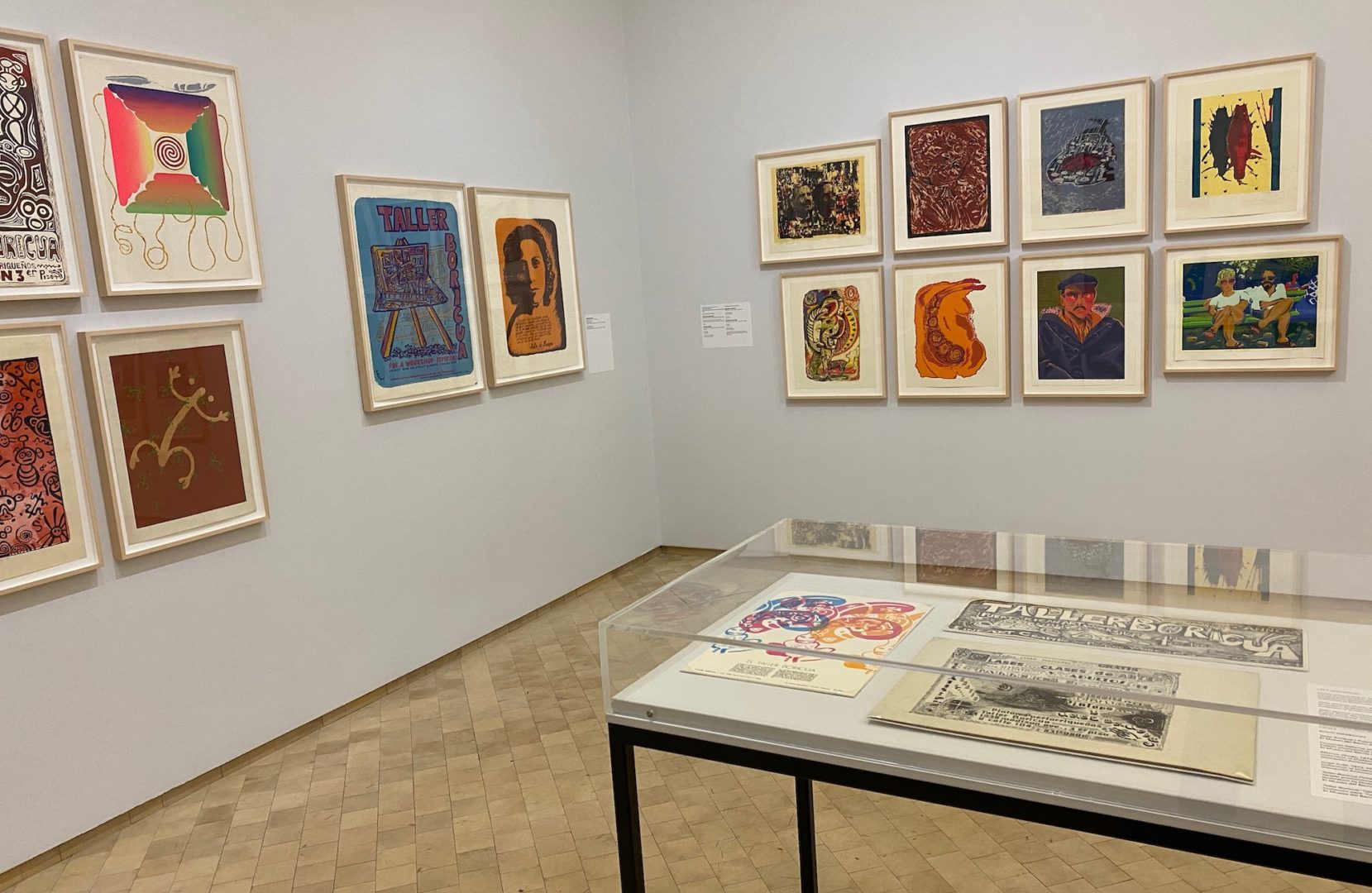
Taller Boricua: A Political Print Shop in New York (through January 17, 2021)
El Museo del Barrio has reopened with the exhibition Taller Boricua: A Political Print Shop in New York, an overview of the revolutionary Puerto Rican workshop founded in the 1970s. The production of print and archival materials from this organization, in many cases in collaboration with El Museo, is devoted to the political activism of NYC’s Puerto Rican community. This exhibition charts three decades of activities with over 200 works and ephemera, including serigraphs, lithographs, linocuts, paintings, assemblages, collages, and drawings by founding and early members, including Marcos Dimas, Carlos Osorio (1927 – 1984), Jorge Soto Sánchez (1947 – 1987), Nitza Tufiño, and Rafael Tufiño (1922 – 2008), among several others. Puerto Ricans hold the distinction as the original and largest Latinex group to populate New York City seventy years ago. This show at El Museo is testament to the Puerto Rican spirit of resistance and resilience.
The Met
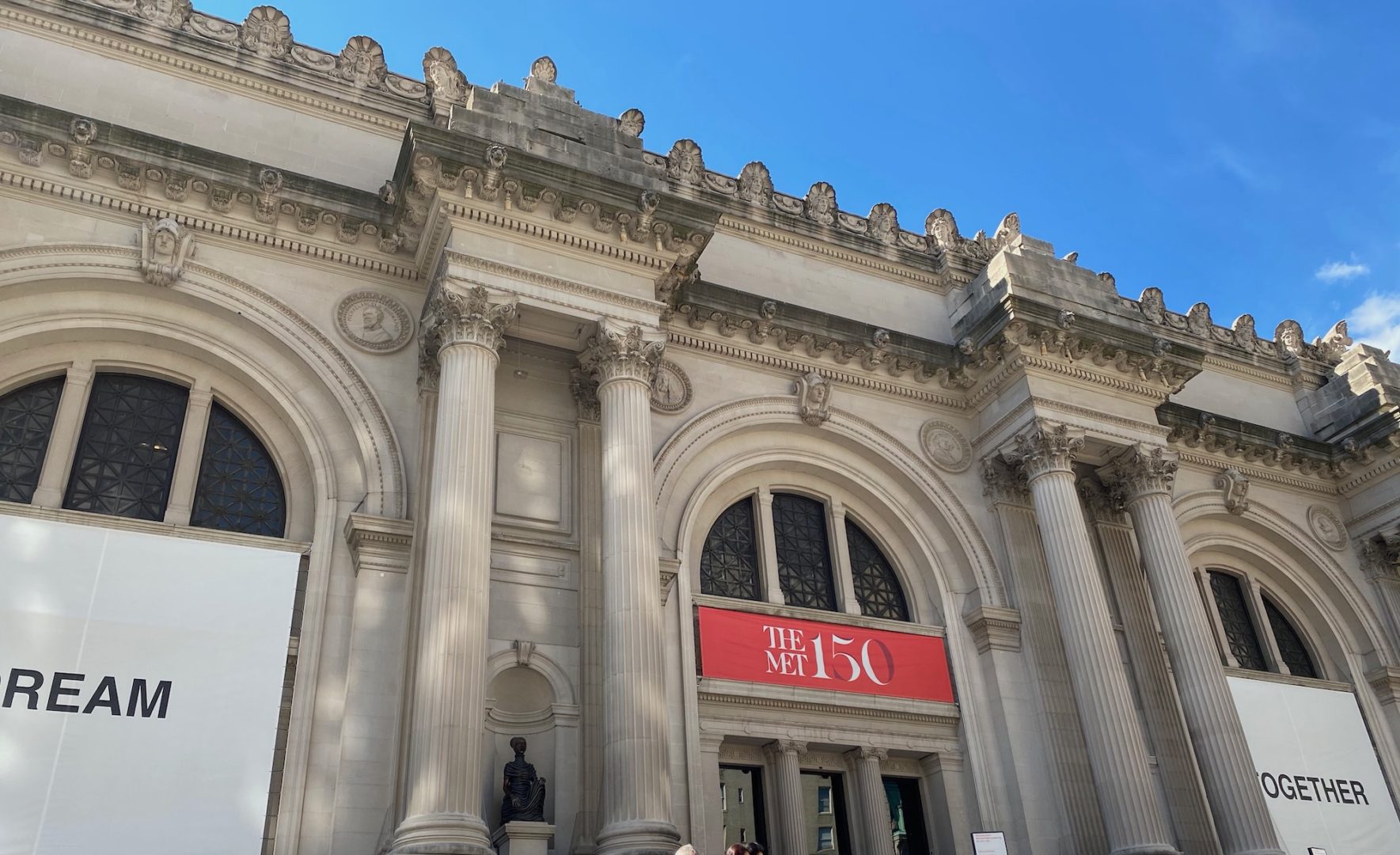
There are endless treasures at the Met but there are some that will not be open to the public for much longer. Before entering the museum, take a moment to appreciate the four niches of the museum facade. They have been occupied by the Kenyan-American artist Wangechi Mutu. The NewOnes Will Free Us (through November 1, 2020) is a set of four statues executed in a manner honoring traditional African art traditions. These niches have sat empty until last fall and these regal female statues will continue to hold court until November. Mutu’s sculptures appear alongside the banners designed by Yoko One featuring the text “DREAM” and “TOGETHER” to mark the museum’e reopening.
Once inside, make your way to Jacob Lawrence: The American Struggle (through November 1, 2020) to see a nearly complete cycle of paintings executed by Lawrence from 1954-1956. Using expressive imagery, the artist illustrates the history of this nation over sixty small canvases. This cycle of painting is a colorful trip through history.
Anyone on Instagram, has probably been bombarded by pictures of Héctor Zamora’s Lattice Detour on the museum’s rooftop (through December 7, 2020). A visit to the rooftop is always a breathtaking experience but we were deterred by the long lines. Since we have time to see this installation before it closes, we spent our time walking through the galleries of the permanent collection and that day, we left the museum feeling recharged.
Hauser & Wirth
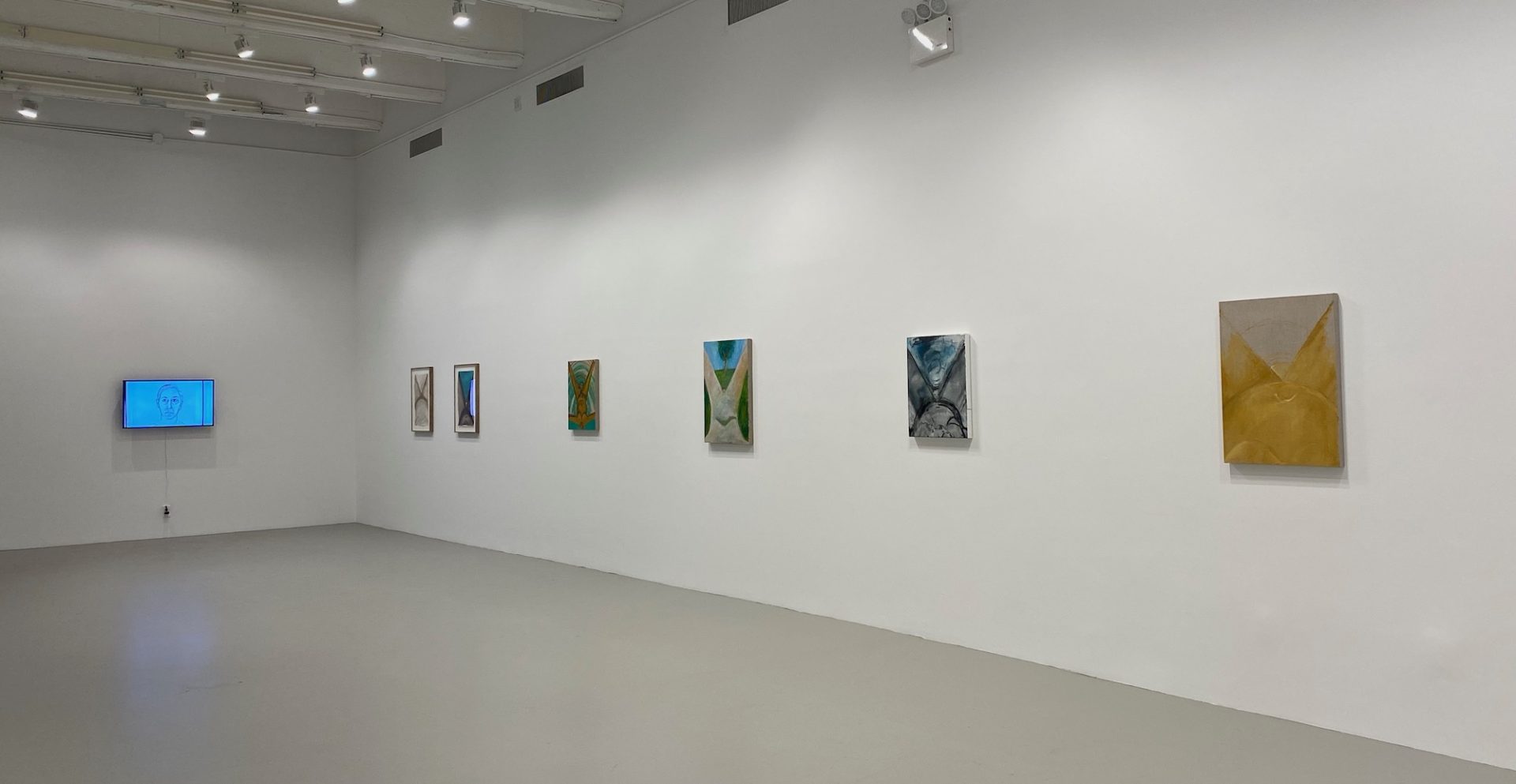
If you plan to go gallery hopping in Chelsea, makes sure to reserve an entry time to see Luchita Hurtado: Together Forever (through October 31, 2020), at Hauser & Wirth’s 22nd Street location. This artist has a cult following and as one of its newest converts, I would be remiss to not mention this exhibition. The life and “discovery” of Hurtado is a fascinating story that climaxed with the survey exhibition Luchita Hurtado: I Live I Die I Will Be Reborn, organized by Hans Ulrich Obrist for the Serpentine Galleries in London last year. This show traveled to the Los Angeles County Museum of Art (LACMA) but was closed to the public shortly after its opening in February 2020 due to the pandemic. Fortunately, the artist participated in these celebrations of her art and life just months before she passed away in August at the age of 99 and just months before turning 100 years old. The Hauser & Wirth show is a treat for those of us in the New York area who were unable to see the museum retrospectives. The gallery is showing a number of enchanting birth paintings completed at the end of Hurtado’s life.
For more about Luchita Hurtado, take a look at this recent article in Daily Art Magazine.
Whitney Museum of American Art
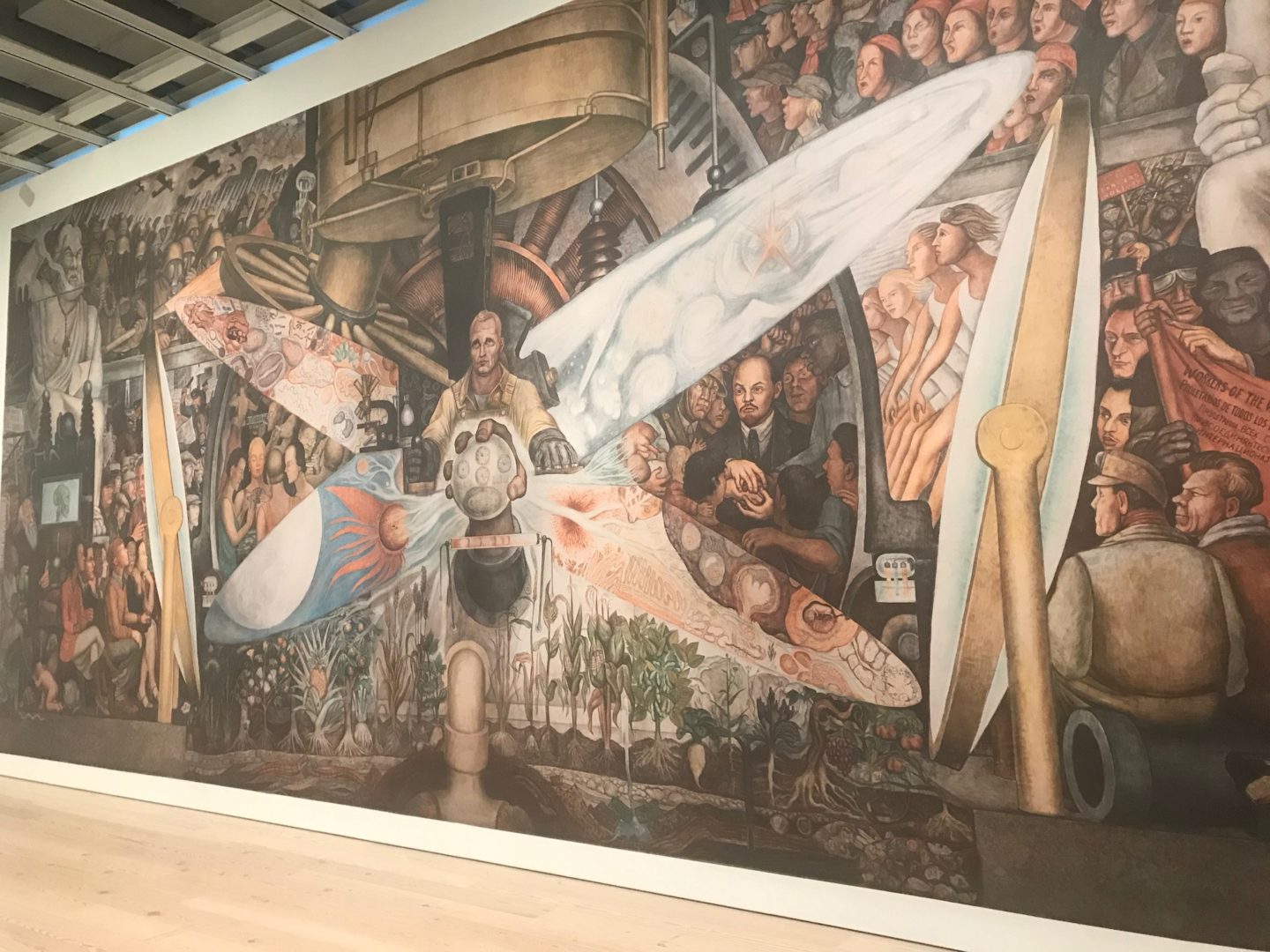
Vida Americana: Mexican Muralist Remake American Art, 1925-1945 (through January 31, 2021) at the Whitney was interrupted when the museum had to close abruptly in March but it is open to the public again. To quote Peter Schjeldahl of the New Yorker, this exhibition, “picks an overdue art-historical fight,” and redefines the origins of post-WWII Abstract Expressionism. The influence of Mexican Muralists, José Clemente Orozco, Diego Rivera, and David Alfaro Siqueiros, over the young Jackson Pollock and other artists is a well thought-out and valid exploration. A worthy fight and a visual delight.
New Museum

I did not have a chance to see Jordan Casteel: Within Reach (through January 3, 2021) before the New Museum closed but I will not miss this young painter’s first solo museum exhibition. The months of the shutdown gave me the opportunity to learn more about artists such as Casteel and her contemporary portrait practice. This exhibition will feature works from earlier series as well as recent portraits of her students at Rutgers University-Newark where Casteel is a professor of Fine Arts.
Thankfully the Public Art Fund unrolled Art on the Grid across MTA bus shelters throughout the five boroughs this summer. Featuring reproductions of works by fifty artists, our neighborhood was granted a Casteel’s portrait of a young, male subway rider. So grateful for this public art inititative.
Queens
MoMA PS1
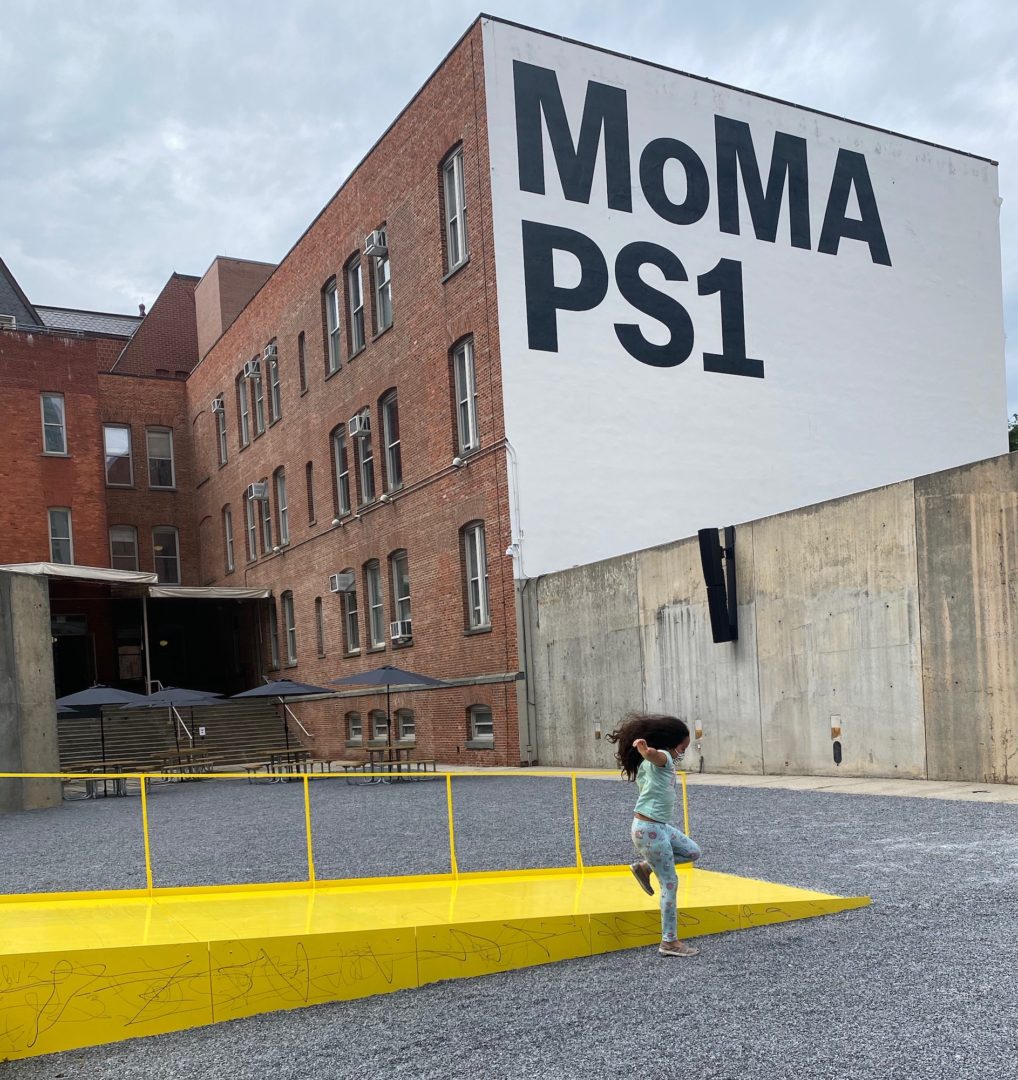
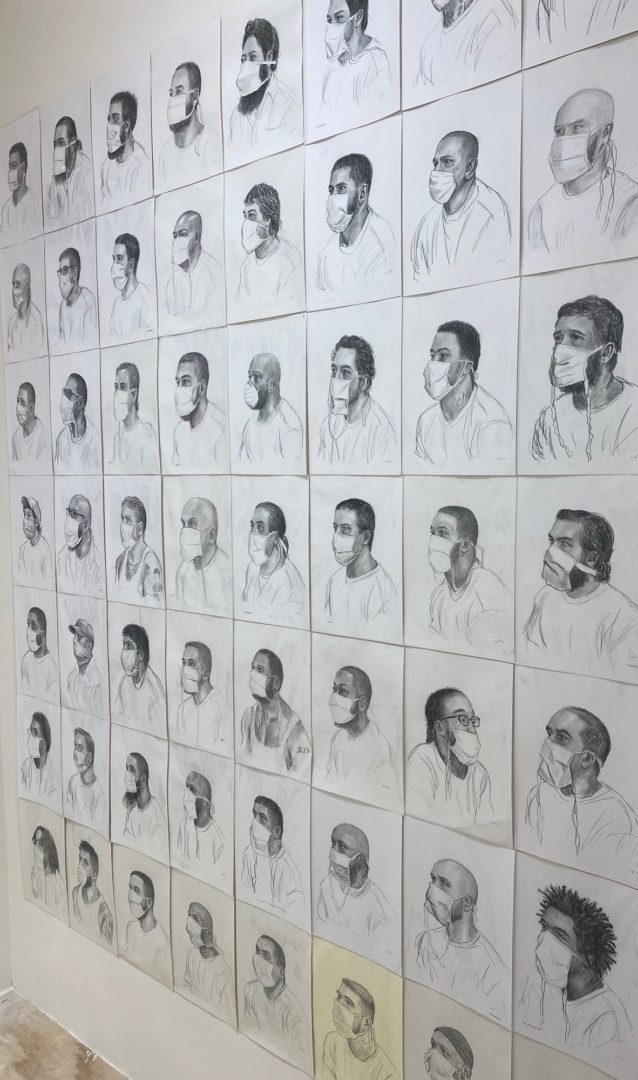
The long-anticipated Marking Time: Art in the Age of Mass Incarceration (through Apr 4, 2021) exhibition has just opened to the public and will remain open through the spring. This exhibition will feature works by individuals who have been incarcerated and artists who address this complicated issue.
There was controversy leading up to this exhibition and during MoMA PS1’s exhibition Theater of Operations: The Gulf Wars 1991-2011 that ran from late 2019 to early 2020. Artists spoke out against board members’ conflict of interests given their involvement with industries profiting from the culture of domestic mass incarceration as well as from the war conflicts have devastated Iraq at the hands of the U.S. government.
Socrates Sculpture Park
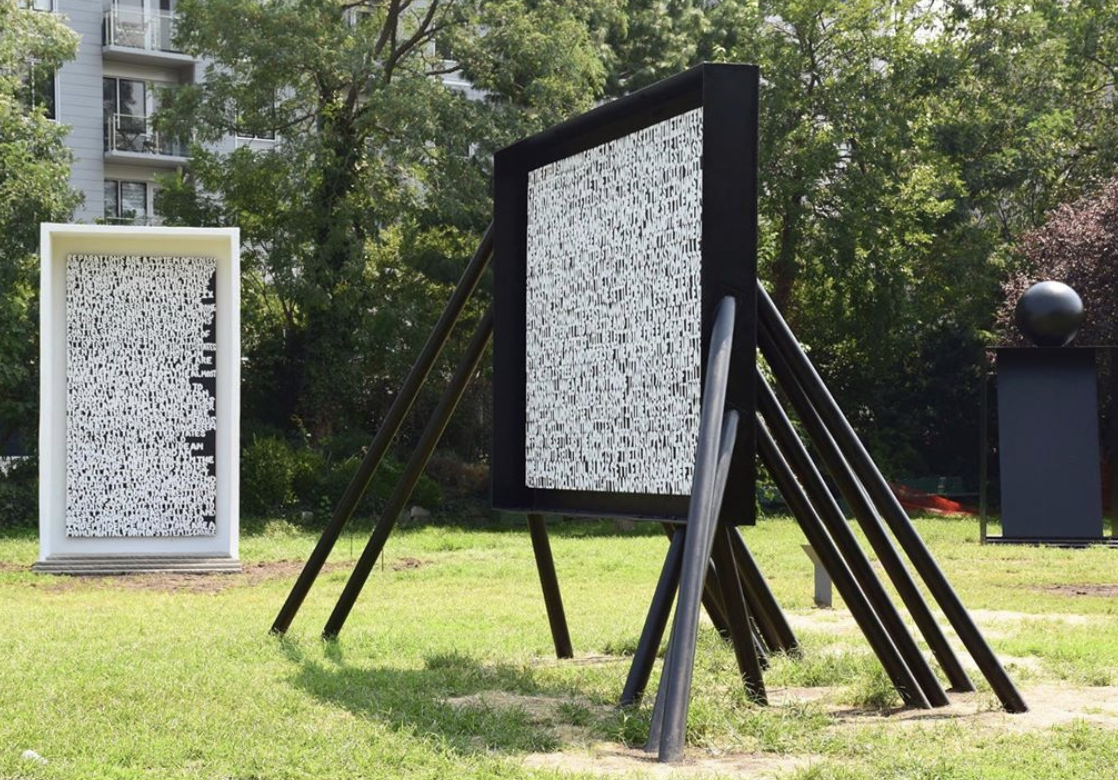
Monuments Now (through March 2021) opened in July and has continued to open in phases by Socrates Sculpture Park. This gradual installation of art installations will continue and be accompanied by in-person and virtual public programming. This exhibition’s timeliness in light of the recent rethinking of national monuments is spot on as does the opening in phases mimics the phases of this city’s reopening. The park is situated along the Queens waterfront, is free and open to the public seven days a week.
Click here to read my review of this exhibition written soon after it had opened to the public in July examining the contributions of artists Nona Faustine and Jeffrey Gibson.
Bronx
Bronx Museum of the Arts
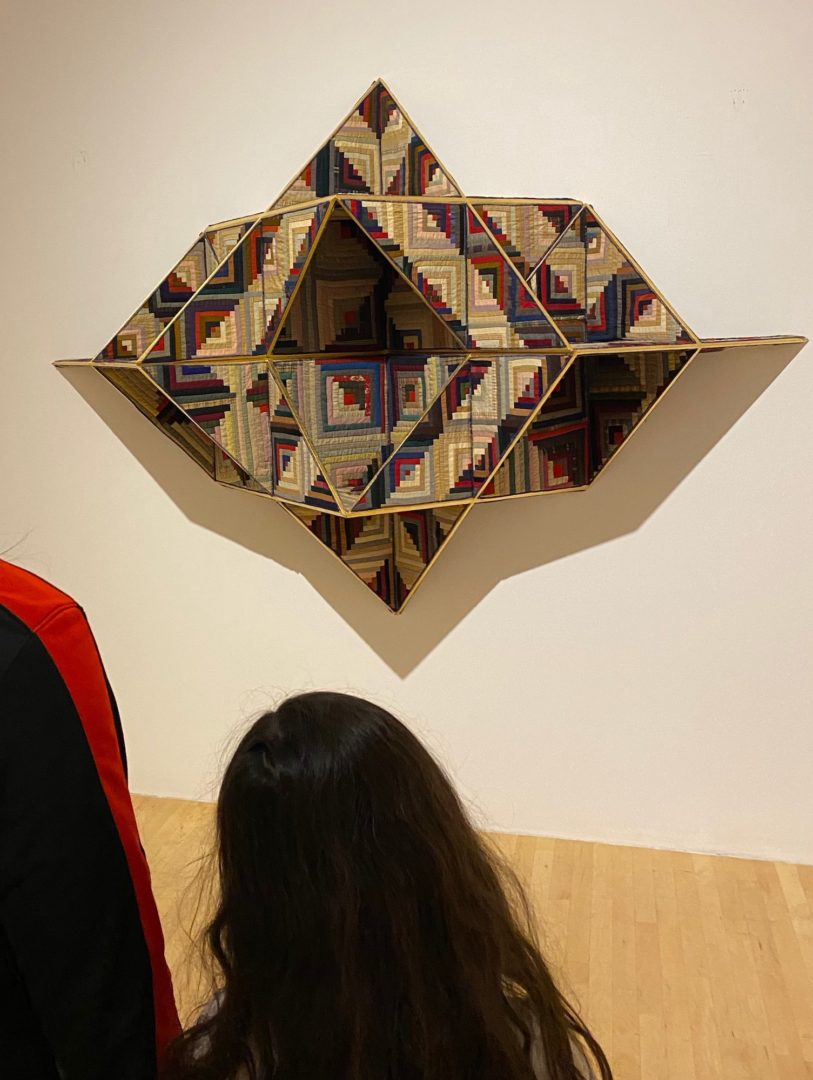
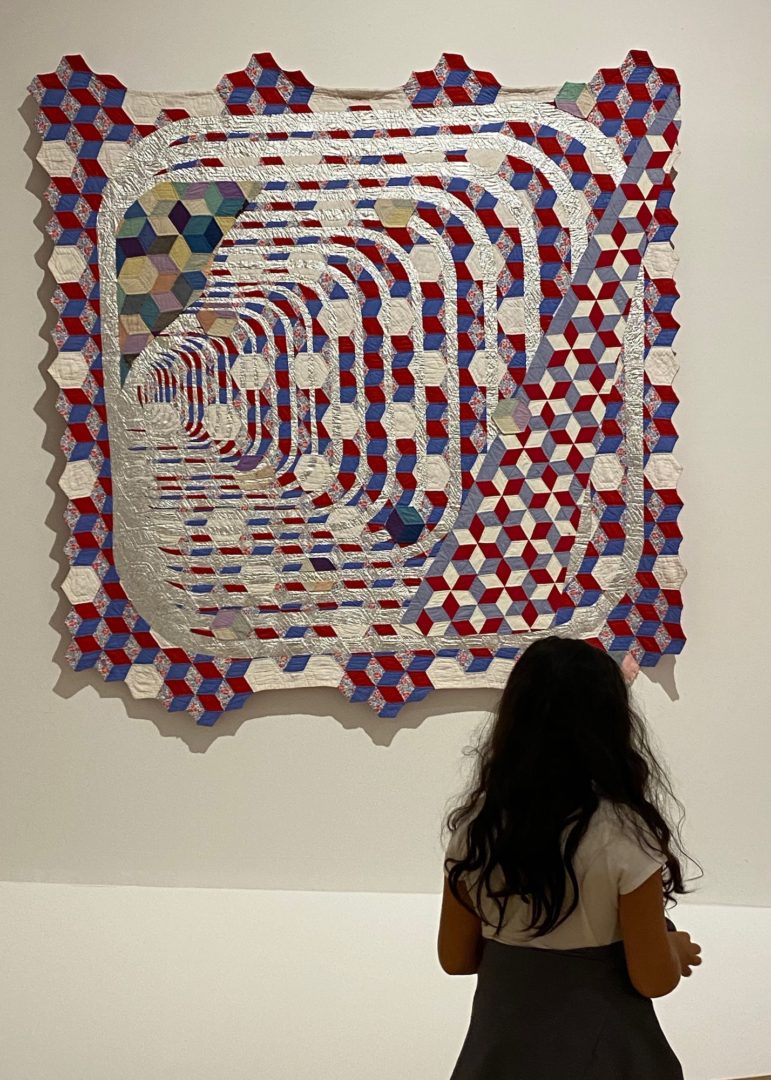
Sanford Biggers: Codeswitch (through January 24, 2021) is a survey of Biggers’s two and three dimensional works using antique quilts. The title to the exhibition references the symbolism and function of the communal traditions around the making of quilts among African Americans. In addition to the function of keeping warm, this practice had another function during the 19th century – to surreptitiously guide slaves along the Underground Railroad. It is believed that codes and message were embedded into the designs of these quilts. Biggers added his own layers of color and texture as well as new meanings to these already symbolic objects of art. To learn more about Biggers’s intentions, take a look at this Hyperallergic interview.
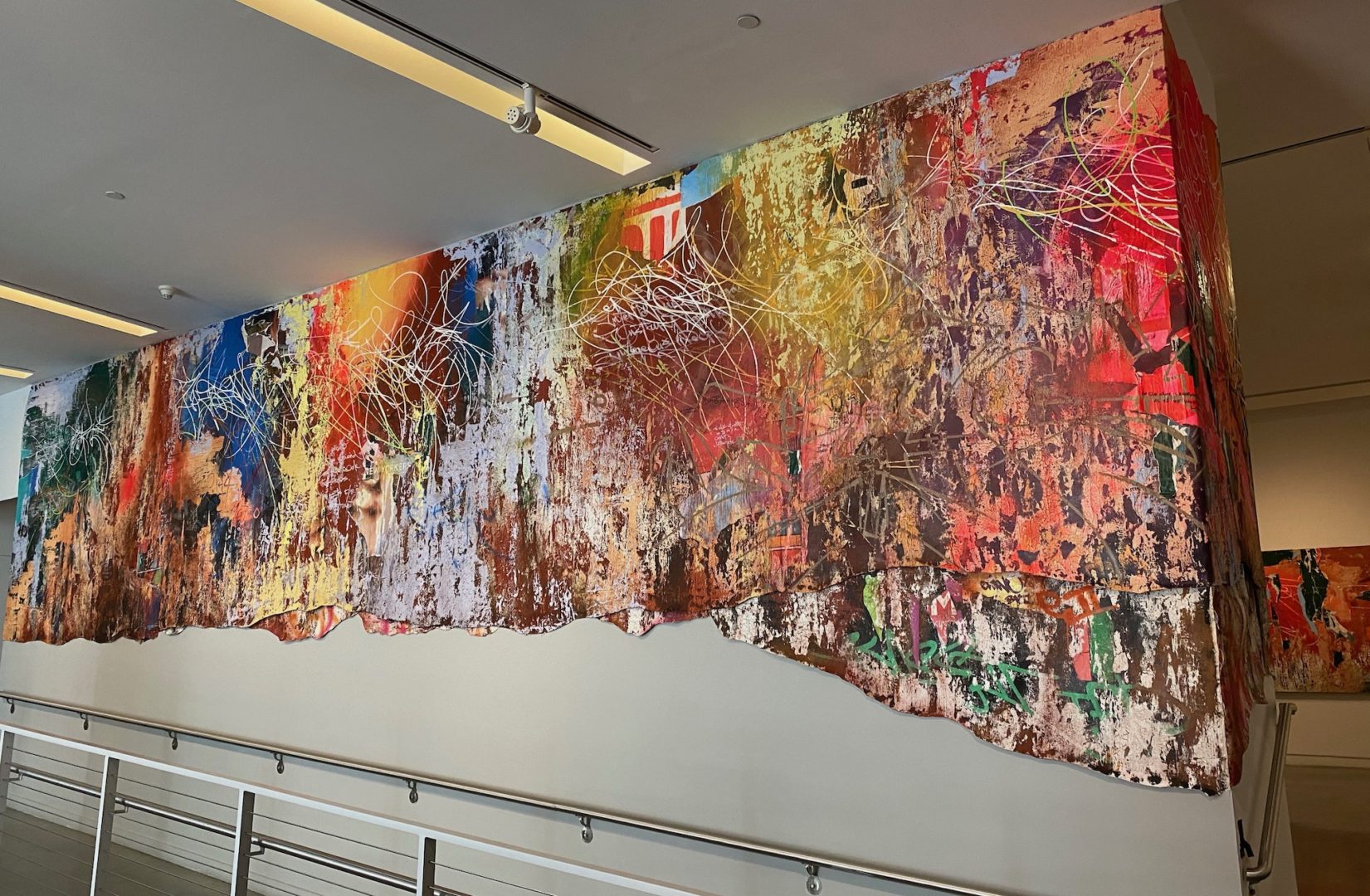
José Parlá was another artist who came to my attention during the shutdown and it was with much excitement to also see José Parlá: It’s Yours (through January 10, 2021) at the Bronx Museum. This Cuban artist who grew up in Miami and currently resides in the Bronx, addresses redlining, gentrification and structural racism in his large-scale abstract paintings. The selection of recent paintings are accompanied by display cases showing early drawings, sketch pads and snapshots of his street art in situ.
Brooklyn
Brooklyn Museum
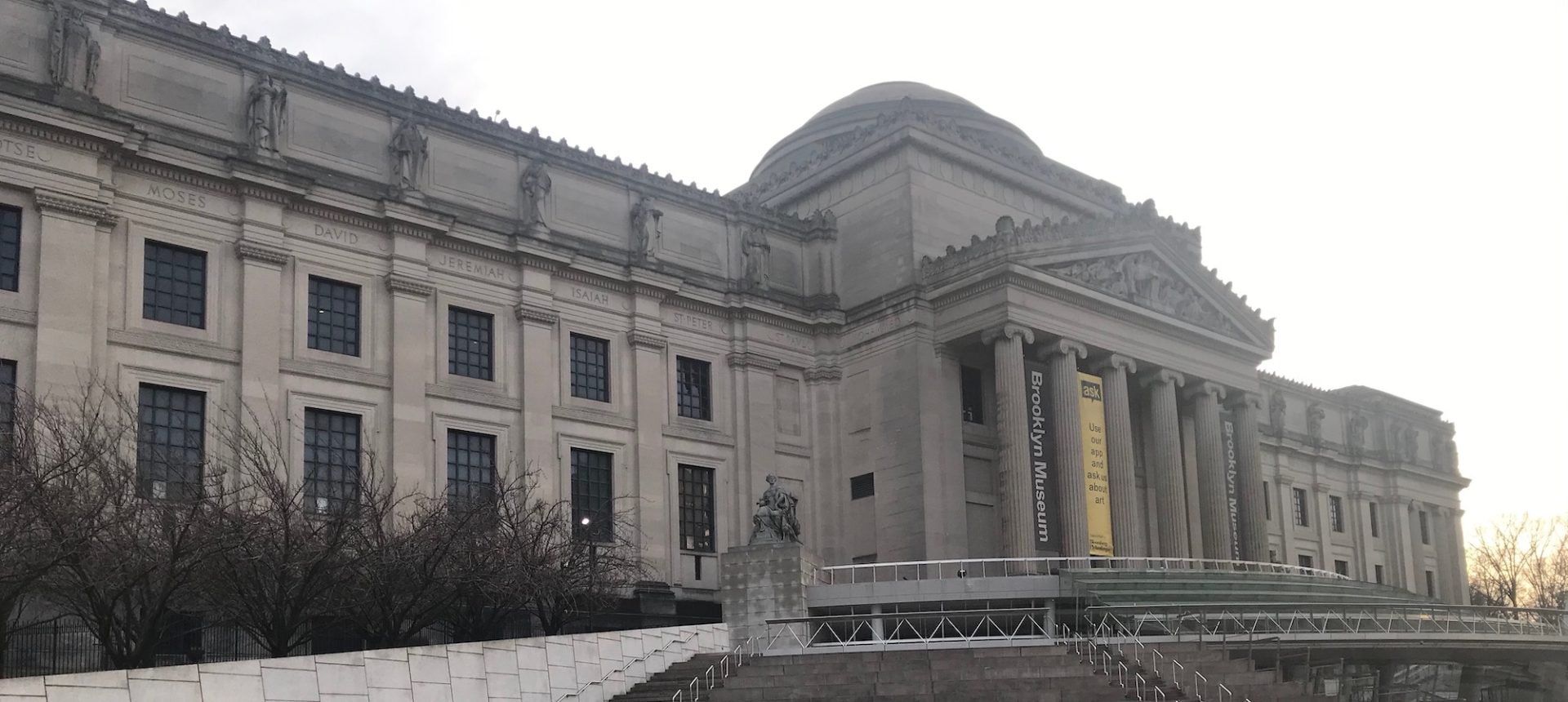
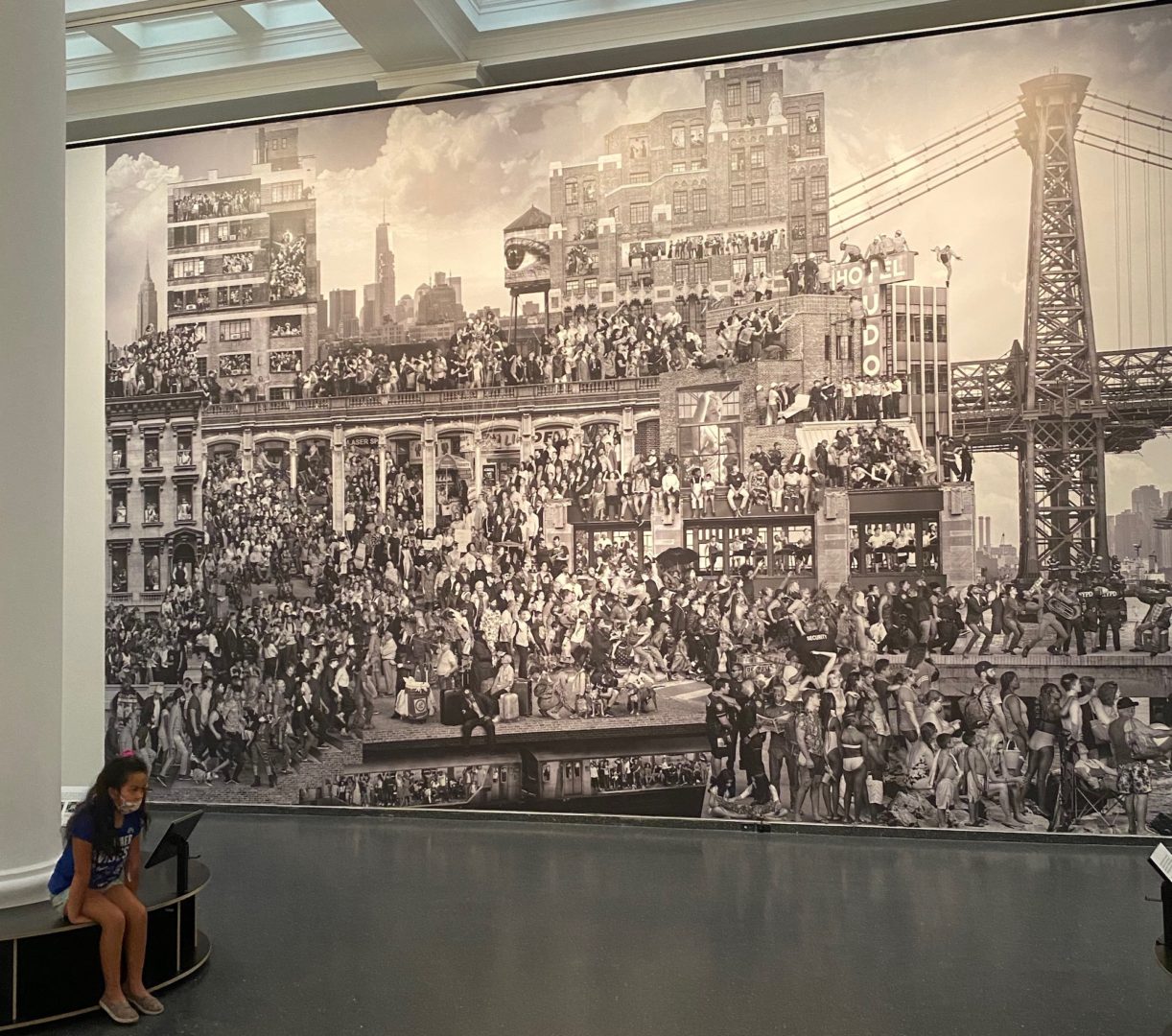
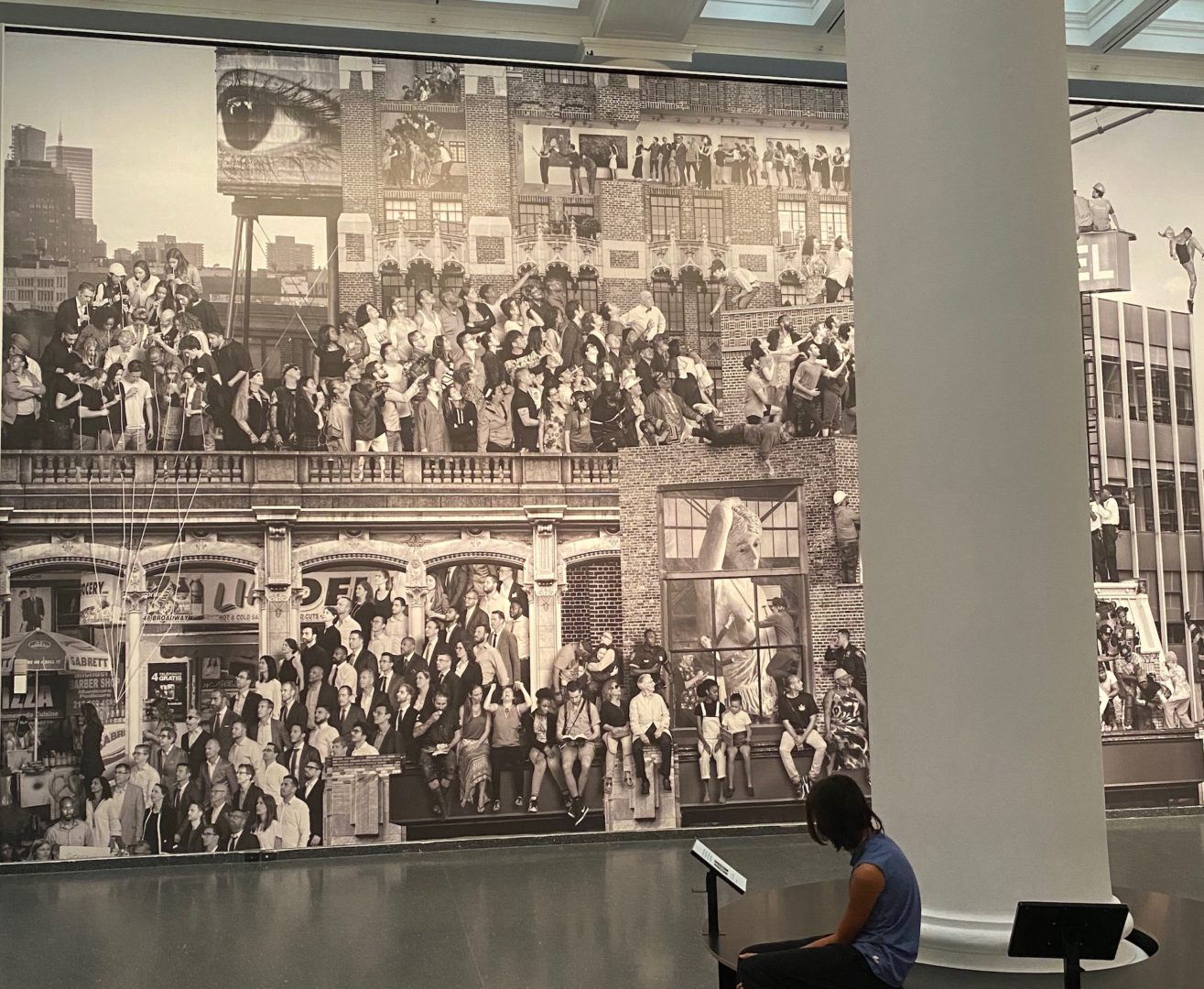
Hurry up and make sure to catch JR: Chronicles (through October 18, 2020) before it closes. French artist JR is a street artist and community activist whose public interventions across the globe have centered around the monumental portraiture of everyday people. Adhering portraits of individuals of these communities onto buildings, billboards and other public surfaces, JR forces people to see and in some cases hear their individual stories as in Chronicles of New York City.
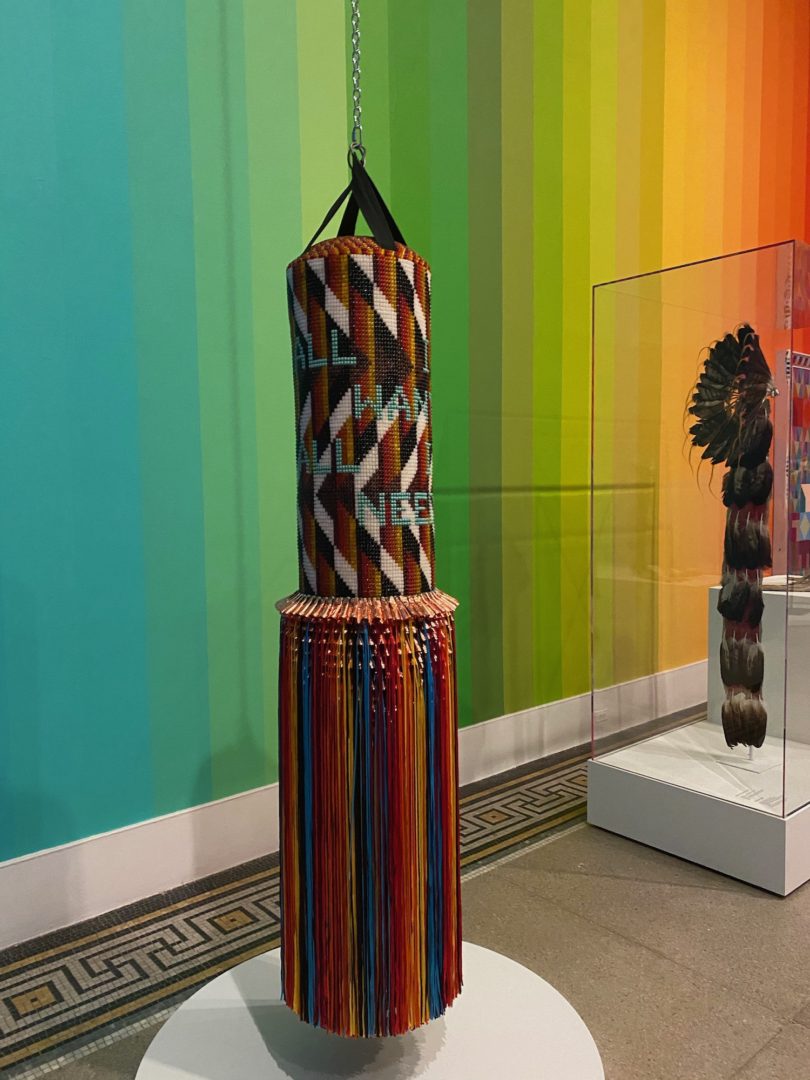
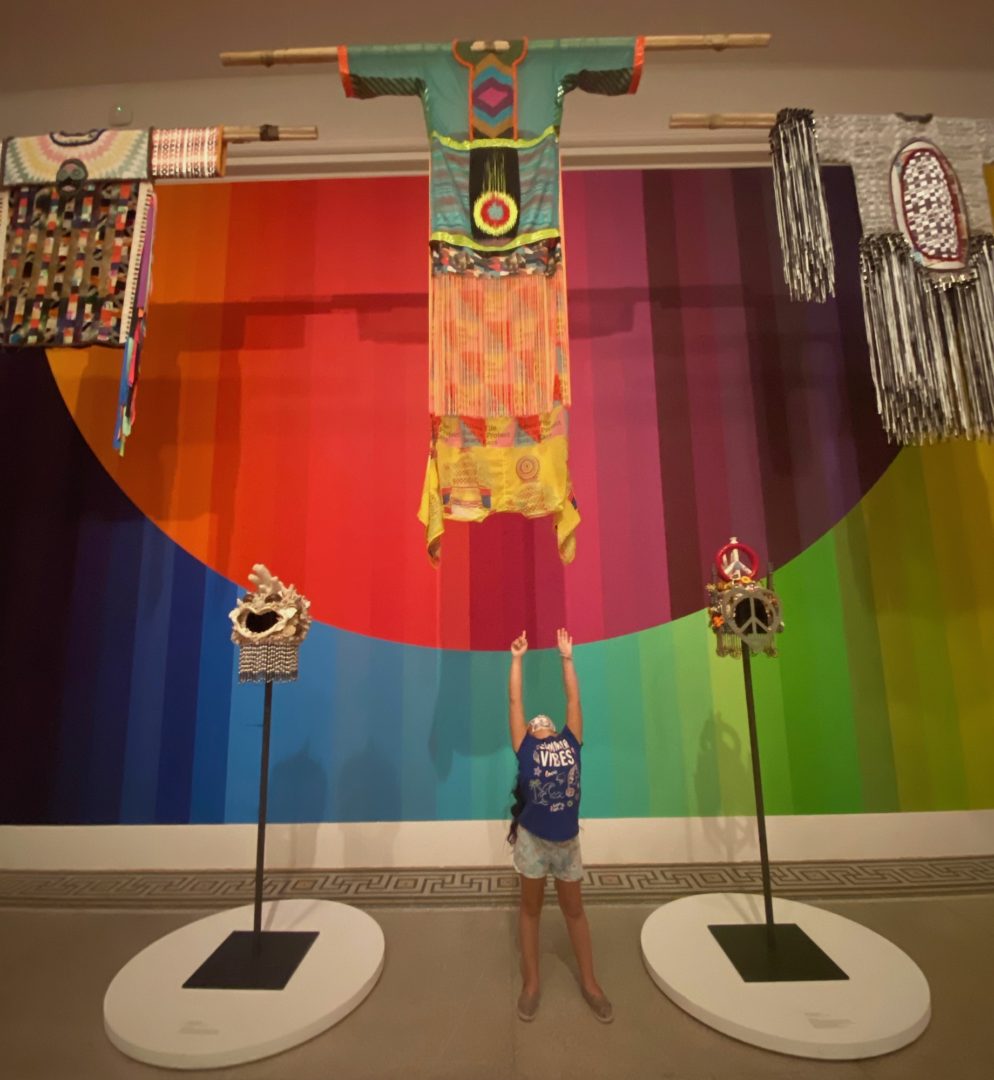
There is a blockbuster exhibition also taking place at the Brooklyn Museum, Studio 54: Night Magic, and perhaps due to visitor restrictions and mandatory timed-tickets, entry to these galleries may not be a hassle. But for those not so interested in memorabilia, explore the permanent collection galleries or seek out Jeffrey Gibson: When Fire Is Applied to a Stone It Cracks (through January 10, 2020). This installation of work by Gibson, of Choctaw and Cherokee descent, alongside objects from the permanent collection questions traditional museum practices regarding indigenous art.
For more posts about art around New York City and abroad click here.
For more about family travel, local (NYC) and abroad, click here.
Click here if you are looking for a little guidance planning your next vacation.





